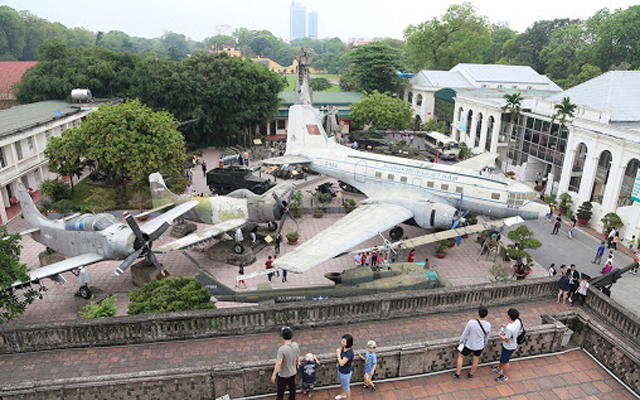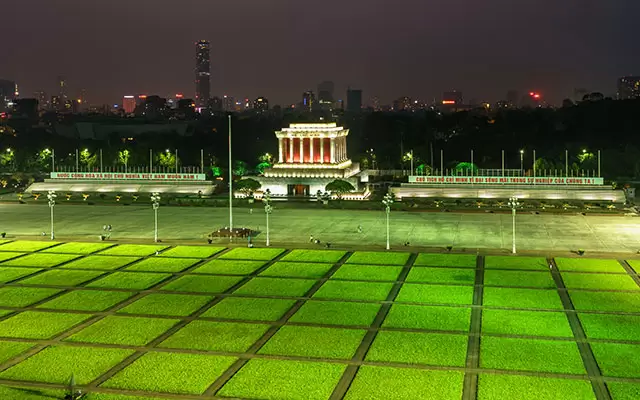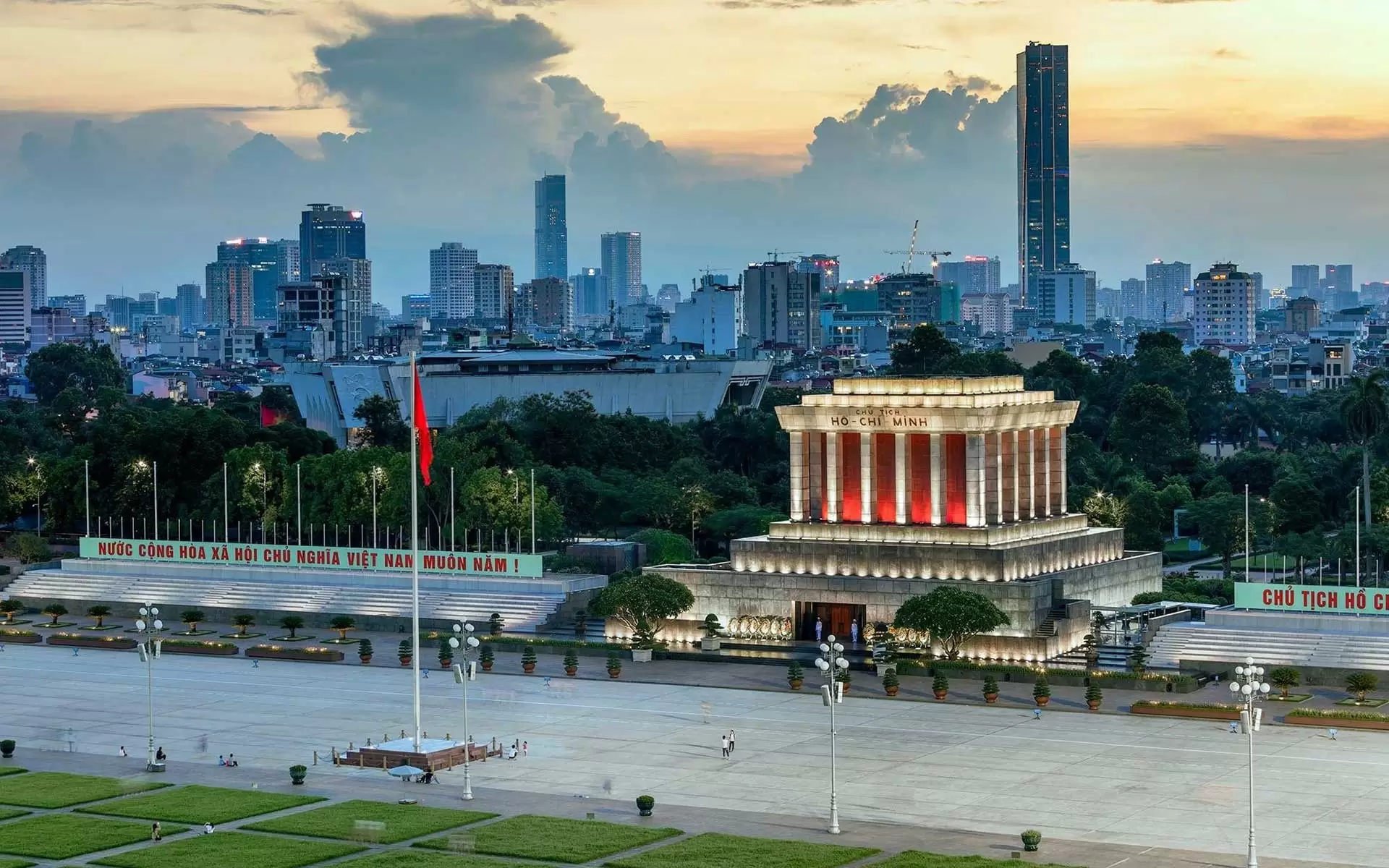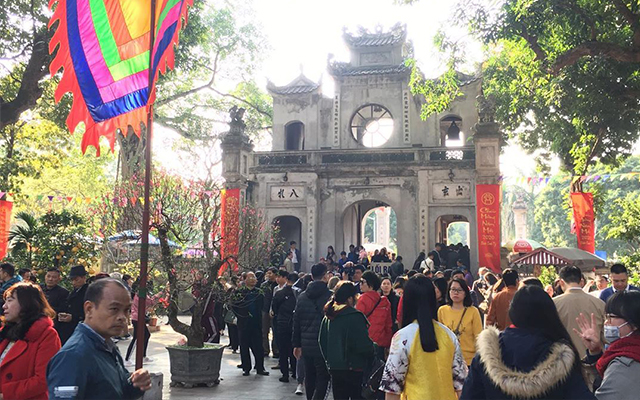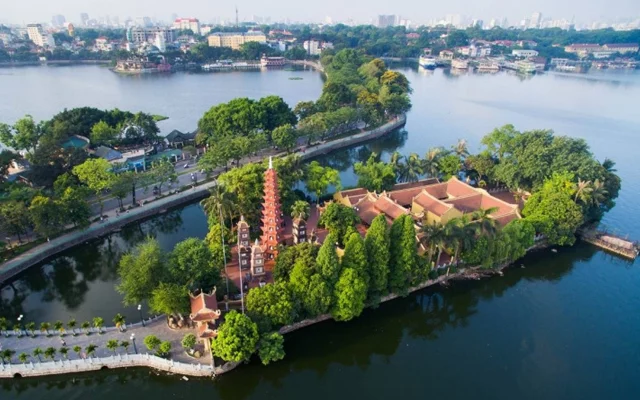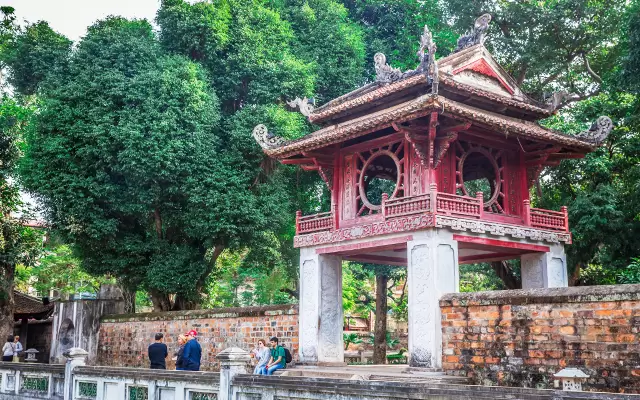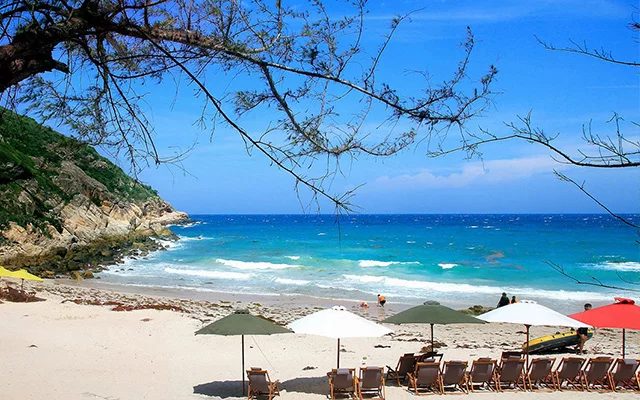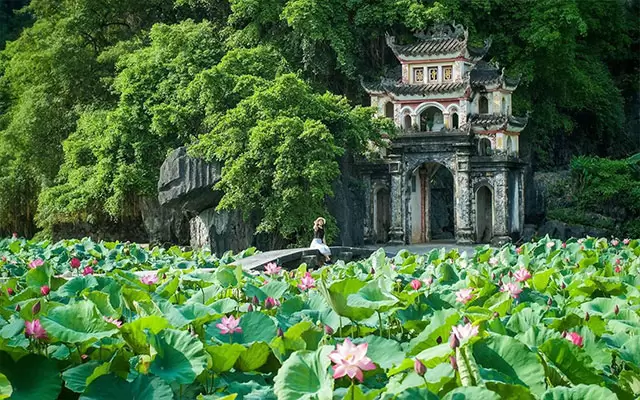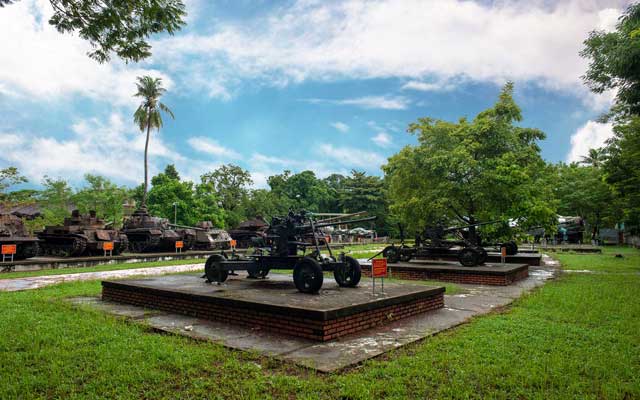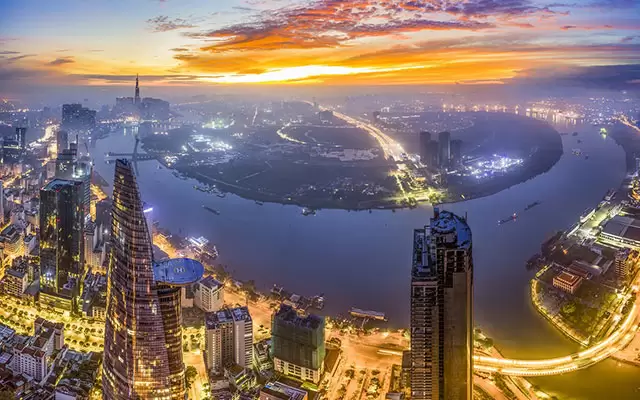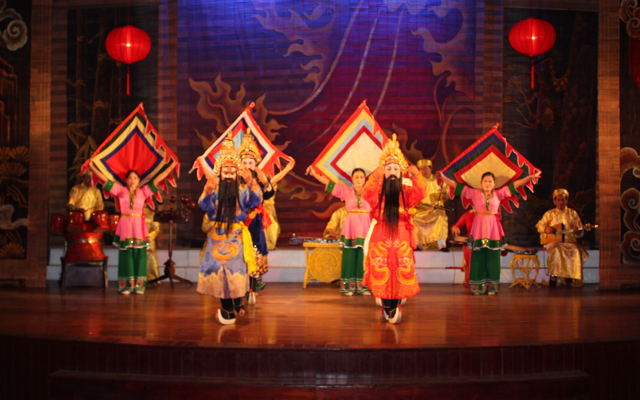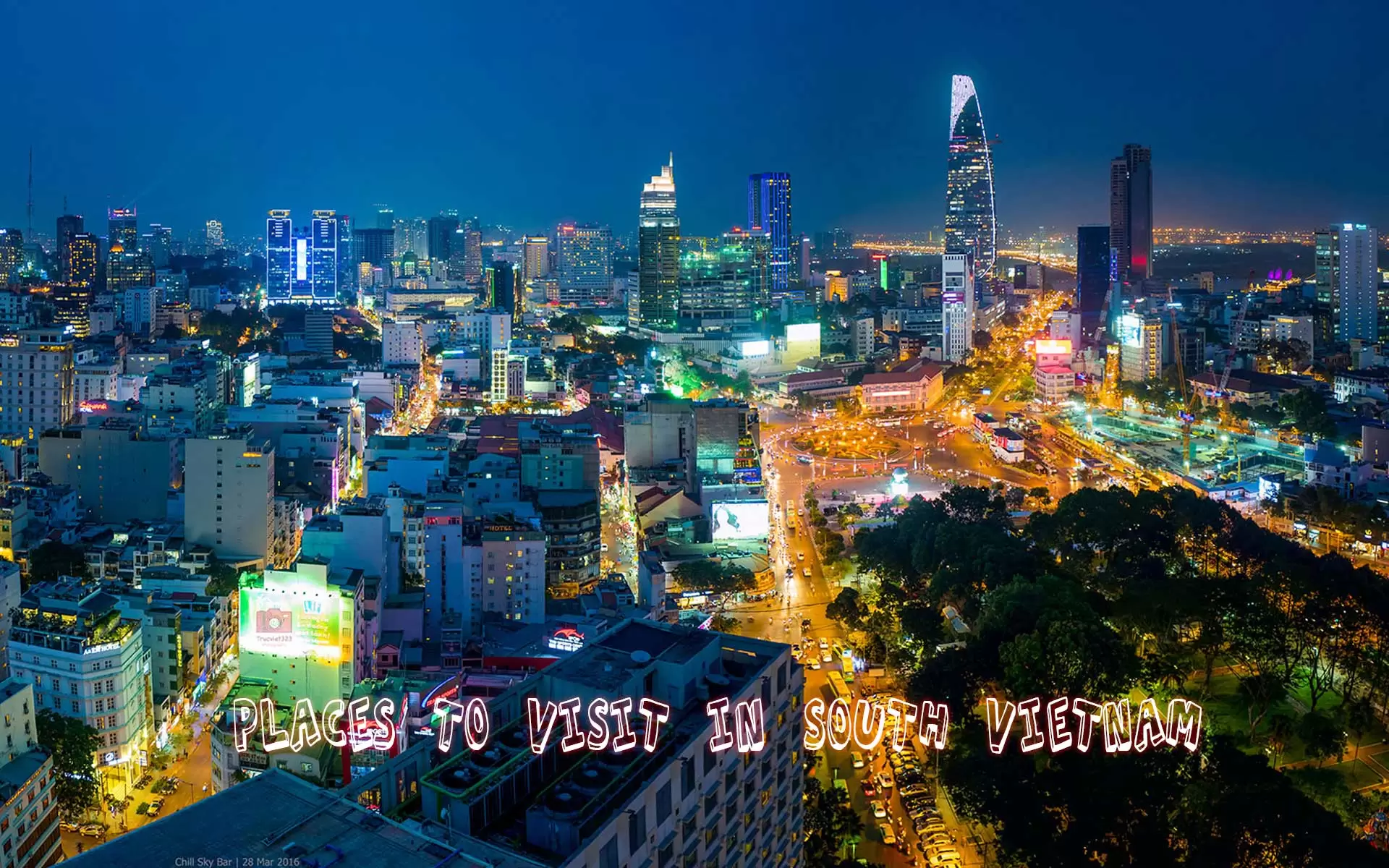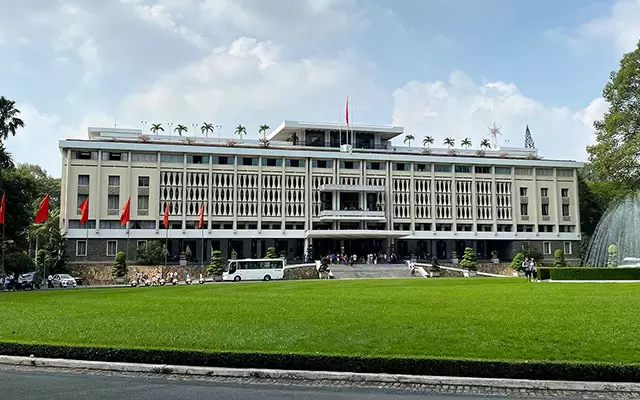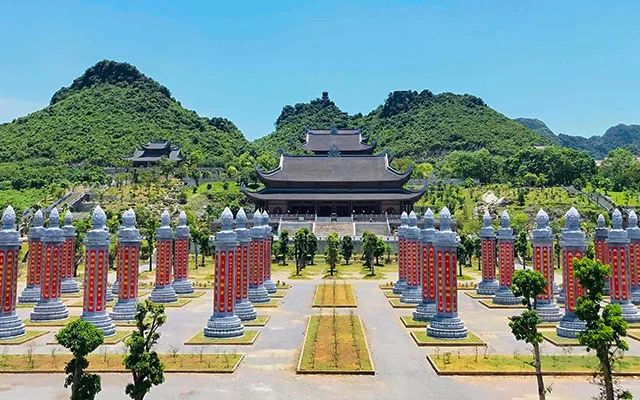Hanoi Flag Tower
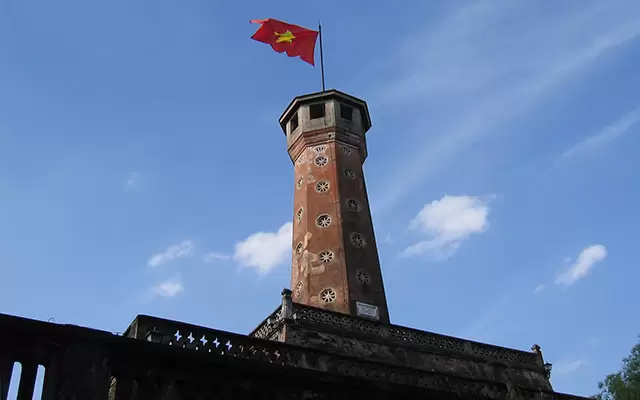
Located in the heart of Vietnam’s capital, The Flag Tower of Hanoi survived through both the French colonial and American wars. The Tower is once a part of the Hanoi Citadel – One of 8 World Heritage Sites in Vietnam. There is a staircase inside which leads to the top with panoramic view of Hanoi and of the courtyard to the Vietnam Military History Museum next to it. Hanoi Flag Tower is one of the favorite stop for travelers Worldwide.
Table of Contents
1. Introduction
The Flag Tower of Hanoi is historical relic and an unique architecture. It became the symbol of Hanoi and Vietnam. The site attracts few hundred thousand visit each year. Through the time, our national flag always flying on the top which is the proud of Vietnamese people.
2. History
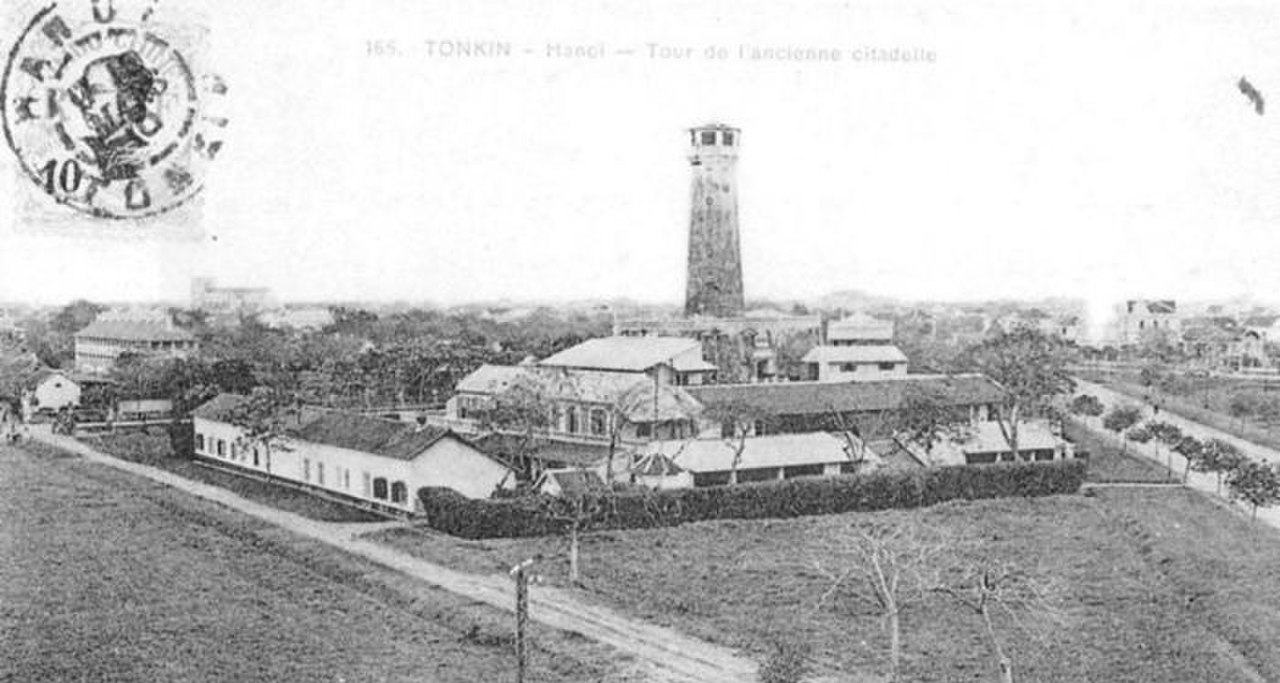
At the age of nearly 200 years, the Flag Tower of Hanoi is now known as one of the symbols of Hanoi.
Constructed in 1805, the tower is completed in 1812 during the Nguyen dynasty, the 11th of Gia Long time, which was 5 years after a construction time of Flag tower in Hue.
It is in the southern part of Thang Long Imperial Citadel where Tam Mon Palace under Le Dynasty had been built, marking the beginning point of the southerly central axis, followed by Doan Mon Gate and Kinh Thien Palace – the central and most important point.
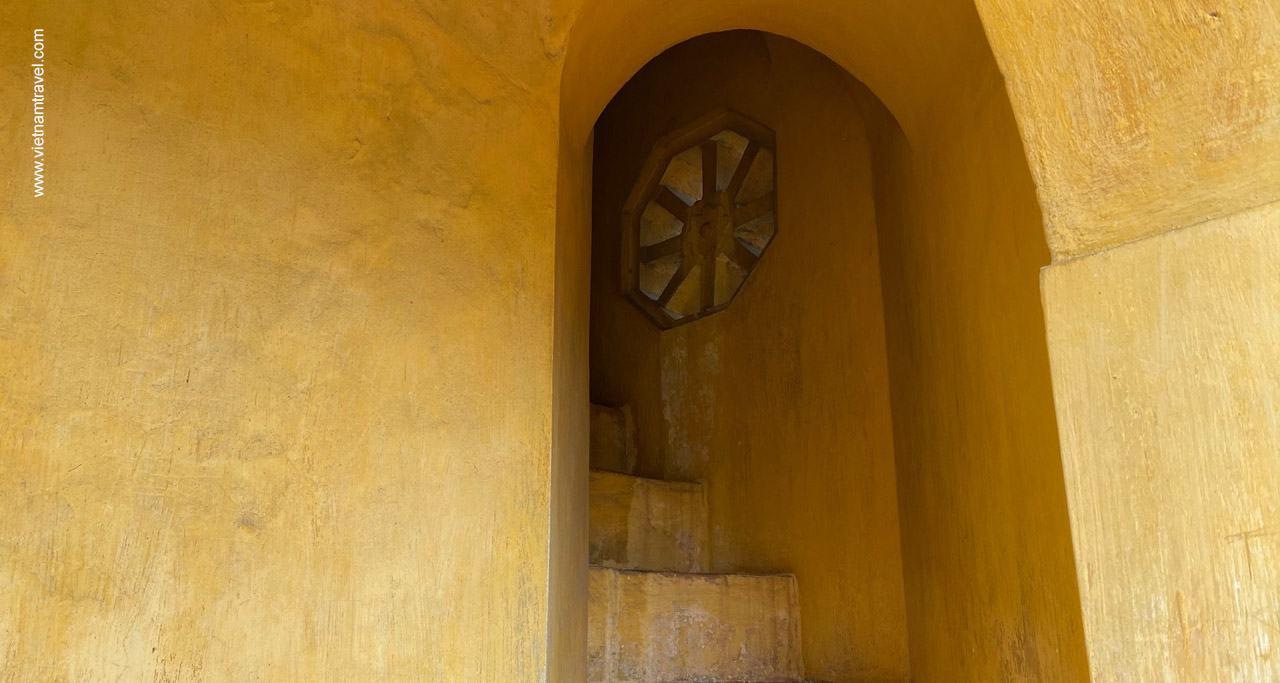
Stairs case leading to the top of Tower.
Although nearly all the constructions in Imperial Citadel of Thang Long were destroyed by the French colonial, Flag Tower was one of the rare architectures that still remain today. It was used as an observation tower by French Army. In American war, it was also an observation tower of Hanoi’s air defense forces.
In 1945, after the successful August Revolution, this was the first time that the red-yellow flag was mounted on the top of the flagpole. On October 10th, 1954, the National Flag was once again flied on the top of Hanoi Flag Tower which was officially recognized as the historical monument in 1990. On May 7, 1964, the 10th anniversary of the historic Dien Bien Phu victory over the French colonialists, Hanoi changed the name of the street where the tower stands from Cot Co (Flag Tower) to Dien Bien Phu.
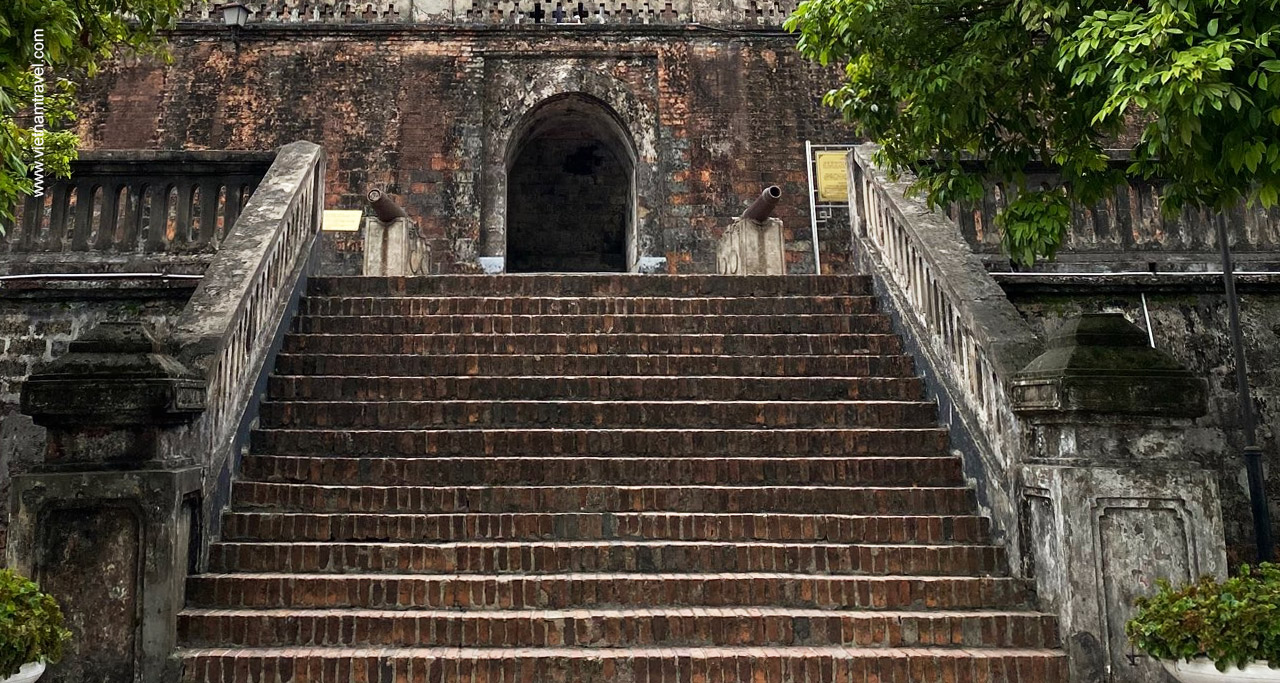
Main entrance of the Tower.
According to study documents, since 1986, a 24m2 red flag with yellow star has always streamed over Hanoi Flag Tower. One flag is used every 2 to 3 weeks on average. The image of the tower was printed on the money paper (old design) issued firstly by the Bank of Vietnam. The old money paper (1 VND) design with the image of Hanoi flag tower.
3. Architecture

The Flag Tower includes three-tier basement and a three-stores column and a tower. The truncated square pyramid-shaped stores are faced with bricks.
The first tier has the length of each side of 42.5m, the height of 3.1m and two brick staircases.
The second tier has the length of each side of 27m, the height of 3.7m with 4 doors facing four directions. Except the North one, the other three are inscribed with two characters relevant to its direction: East door – Nghênh Húc (To welcome dawn’s sunlight), South door – Hướng Minh (Directed to the sunlight), West door – Hồi Quang (To reflect light).
The third tier is a square of 12.5m each side and 5.1m high. There is a spiral staircase leading from the first to the third tier.
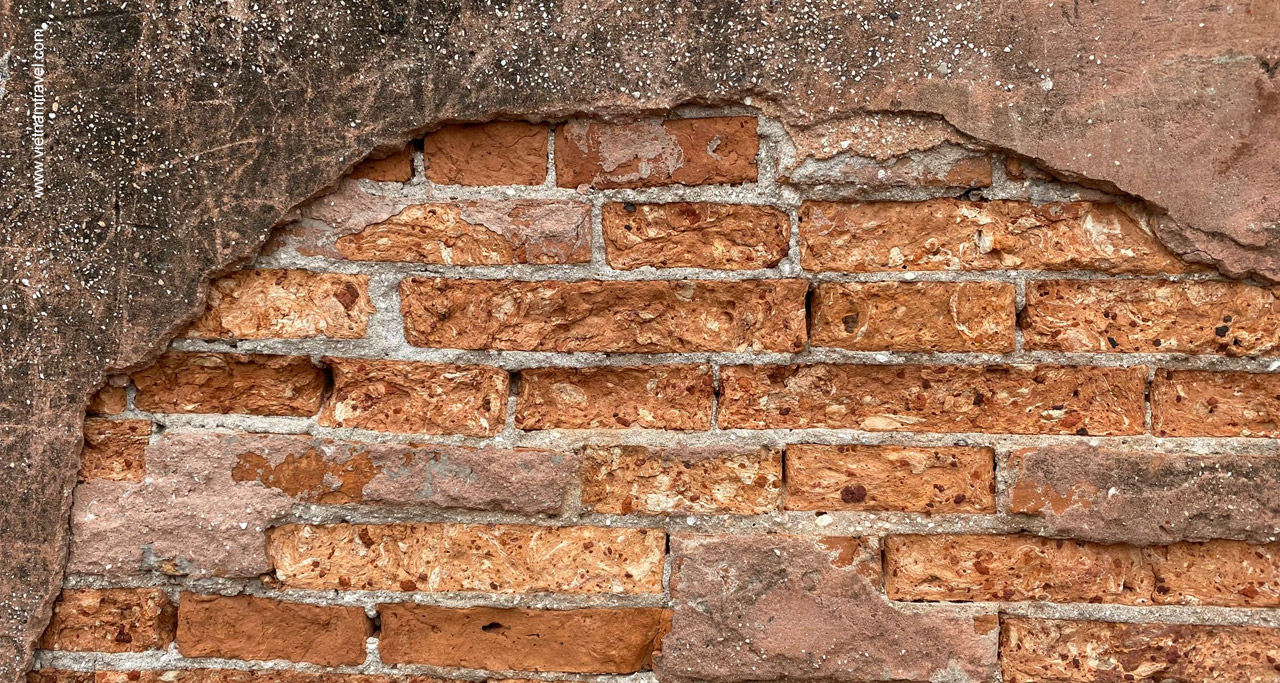
Part of the walls on the main body of Tower
According to researchers, the first and second levels are built mainly with mallet bricks, which were typically used during the Le Dynasty (1428-1788). The third level is built of hard burnt bricks, while the body uses half-baked bricks.
The part above the third tier is a column with 8 fringes narrower to the top. Each fringe is 2.13m wide and 18.2m high. The spiral staircase consists of 54 steps leading to the top but visitors are not allowed to go up. They can only climb as far as the third level.
It is lightened and ventilated by 39 flower-shaped and 6 fan-shaped windows which scatter along the fringes with 5 or 6 on each. On top of the tower is an octagonal observatory of 3.3m high with 8 doors in 8 sides. In the middle of it, there is a round base of 0.4 meter in diameter and 8m high up to the top where the national flag is fixed. The whole architecture is 33.4m high from its basement up to the top. If including the round base for flagging on top, the structure is 41.4m high.
At the foot of the Flag Tower is an outdoor display area of the Vietnam Military History Museum.
4. Local Tips
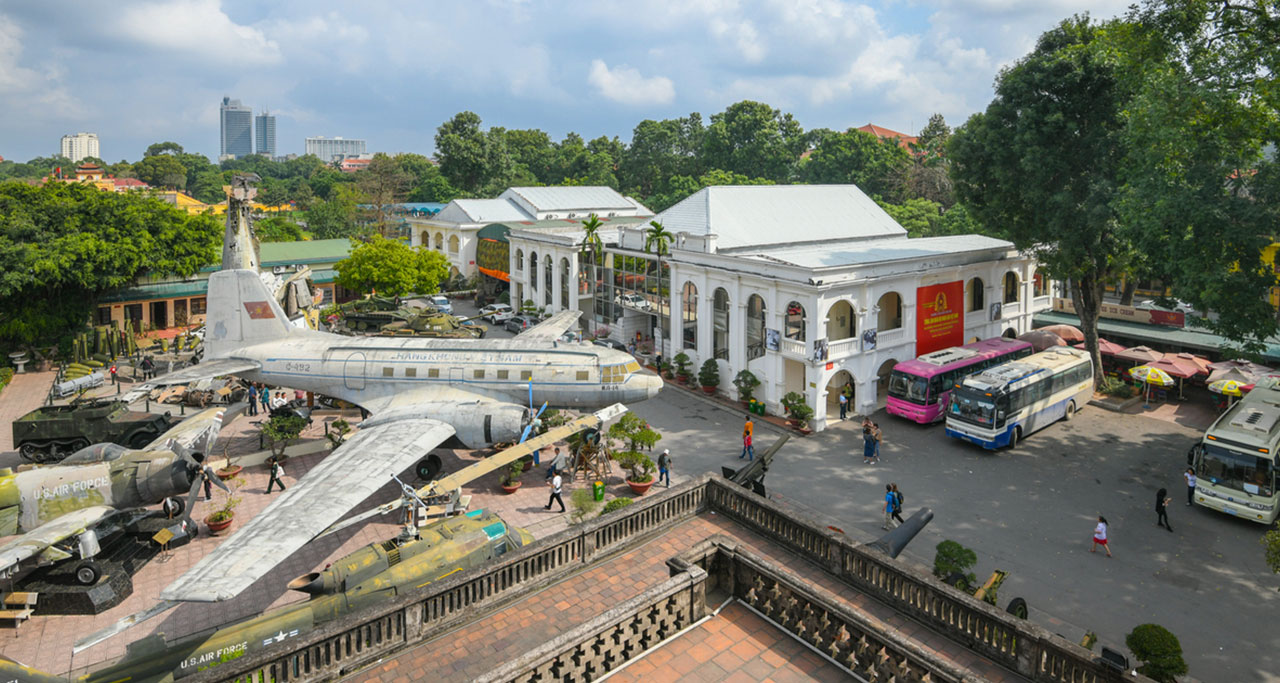
• Timing
Visitors are recommended to spend from 30 minutes to 1 hour in Hanoi Flag Tower.
The best time to visit is from 9.30am – 10.30am due to the low number of guests.
• Dress code
There is no rule for dress code but visitors are advised to wear formal clothes as historical place are a quite serious place for most of locals.
• Preparation
Cameras and smartphone are necessary if you want to take some pictures with beautiful backgrounds.
If you visiting in summer, remember to use sunscreen and anti-bugs spray.
A hat is the must-thing to bring along. You can also bring a small umbrella in case raining.
You can bring along a small bottle of water. However, there is a Highlands Coffee chain store in which visitors can rest, as well as souvenir shops where one may browse various products.
5. How to access The Flag Tower of Hanoi?
It takes around 20 minutes to walk from the Old Quarter to the Hanoi Flag Tower due to the 1.6km distance. So it is possible for visitors to travel here on foot. However, there are various transports to choose such as bus, taxi or rented motorbike. It takes about 10 minutes to go.
We highly recommend to access The Flag Tower of Hanoi by private car/ van with local tour guide to escort you. That is the most comfortable and interesting way to visit the Hanoi and its attractions.
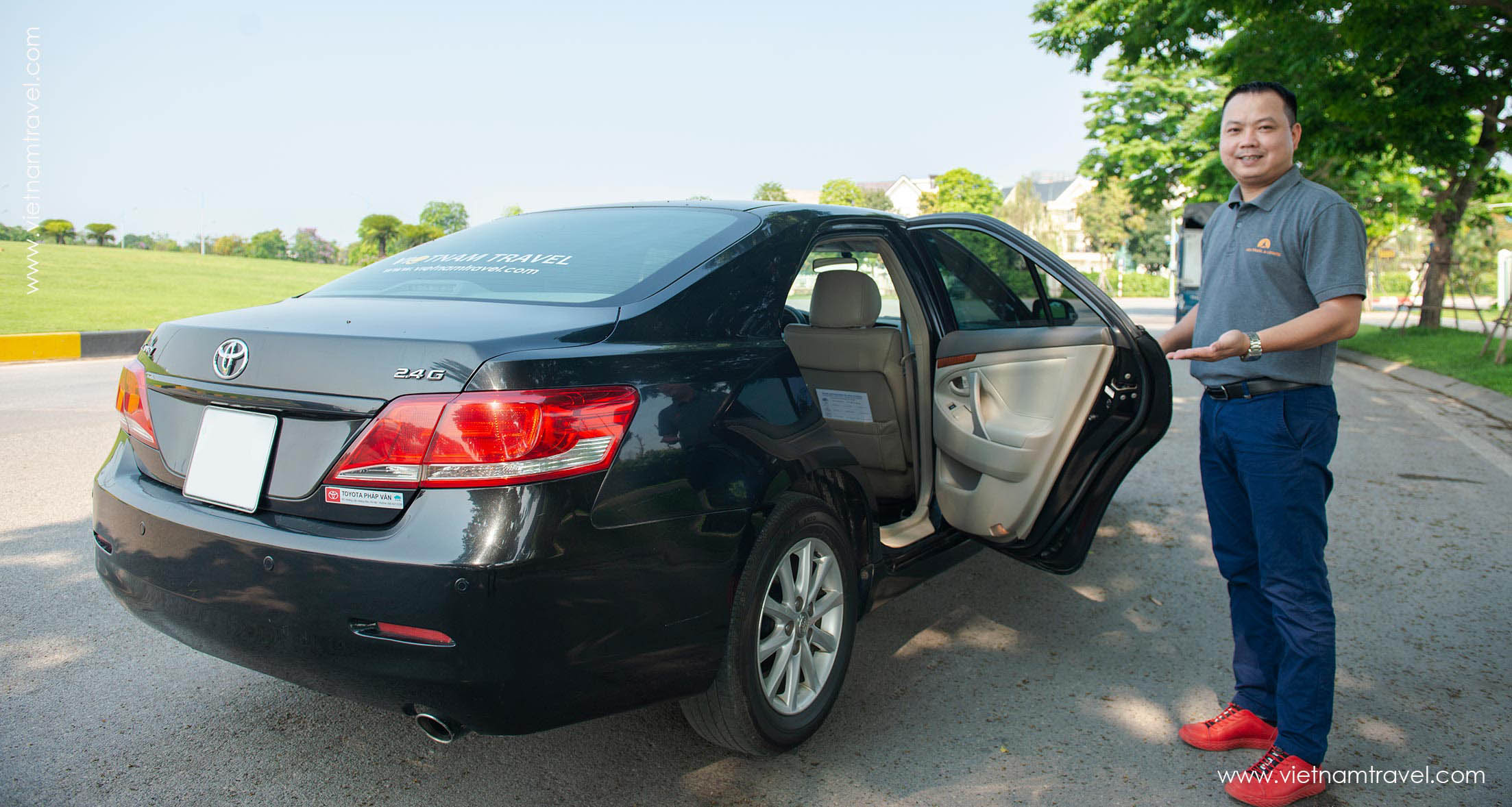 You can buy the Military History Museum ticket that bonus the visiting to Flag Tower. Usually, tourists visit the Flag Tower along with the museum. Nearby attractions of Ho Chi Minh complex; Imperial Citadel of Thang Long (much of it was destroyed during the French Occupation, and only a few gates and buildings are left standing); West Lake; Tran Quoc pagoda or Quan Thanh temple can be combined when you pay the visit here.
You can buy the Military History Museum ticket that bonus the visiting to Flag Tower. Usually, tourists visit the Flag Tower along with the museum. Nearby attractions of Ho Chi Minh complex; Imperial Citadel of Thang Long (much of it was destroyed during the French Occupation, and only a few gates and buildings are left standing); West Lake; Tran Quoc pagoda or Quan Thanh temple can be combined when you pay the visit here.
Address: 28A Dien Bien Phu, Ba Dinh District Hanoi, Vietnam
Opening hours: Every day except Monday, from 9.00AM – 17.00AM
Entrance fee: 40,000VND / visitor

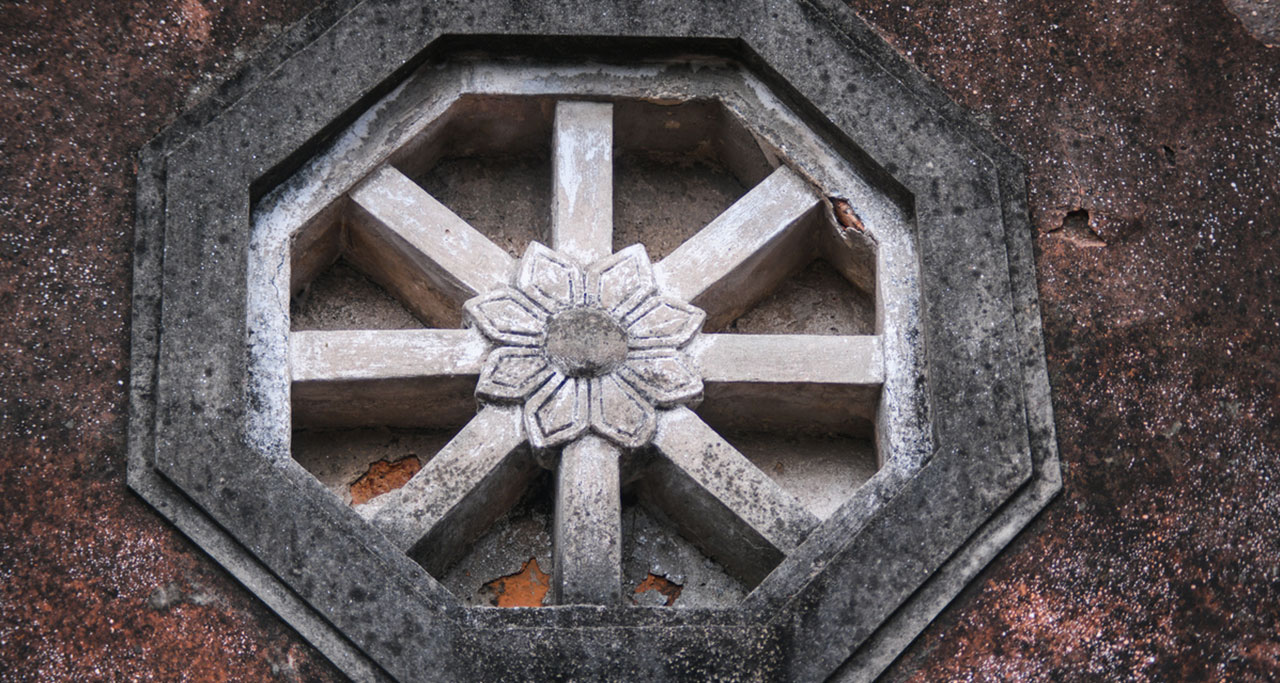
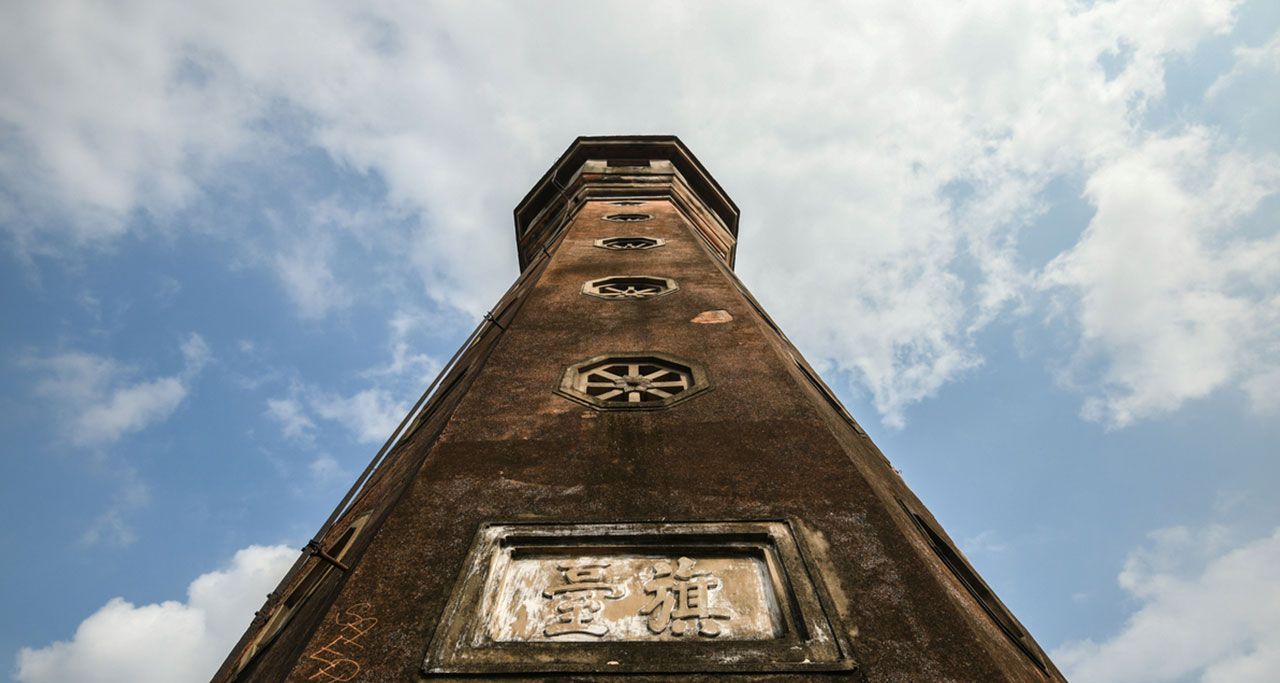
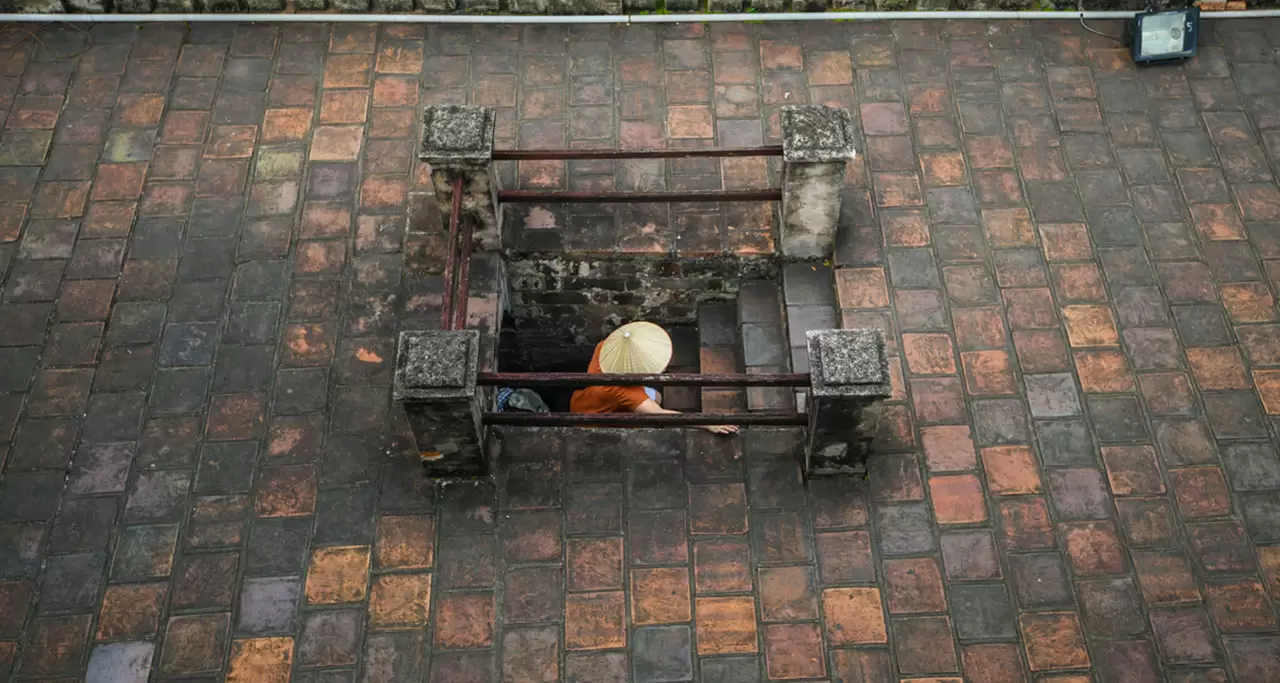
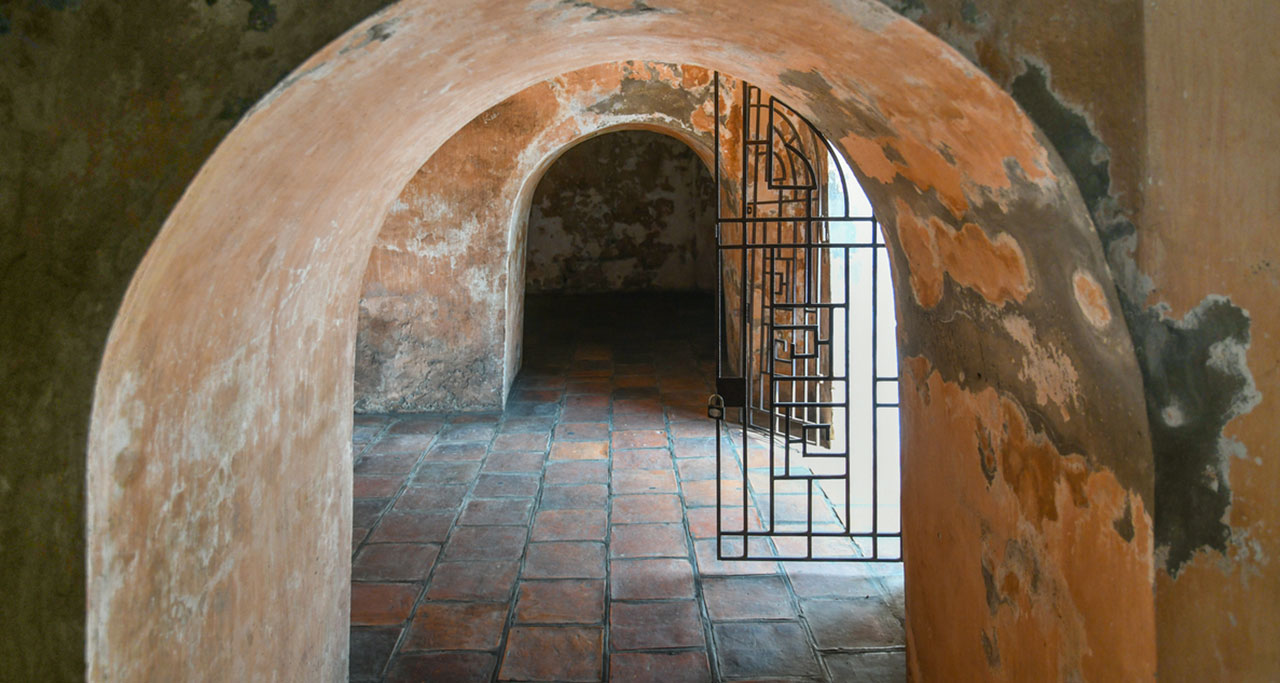
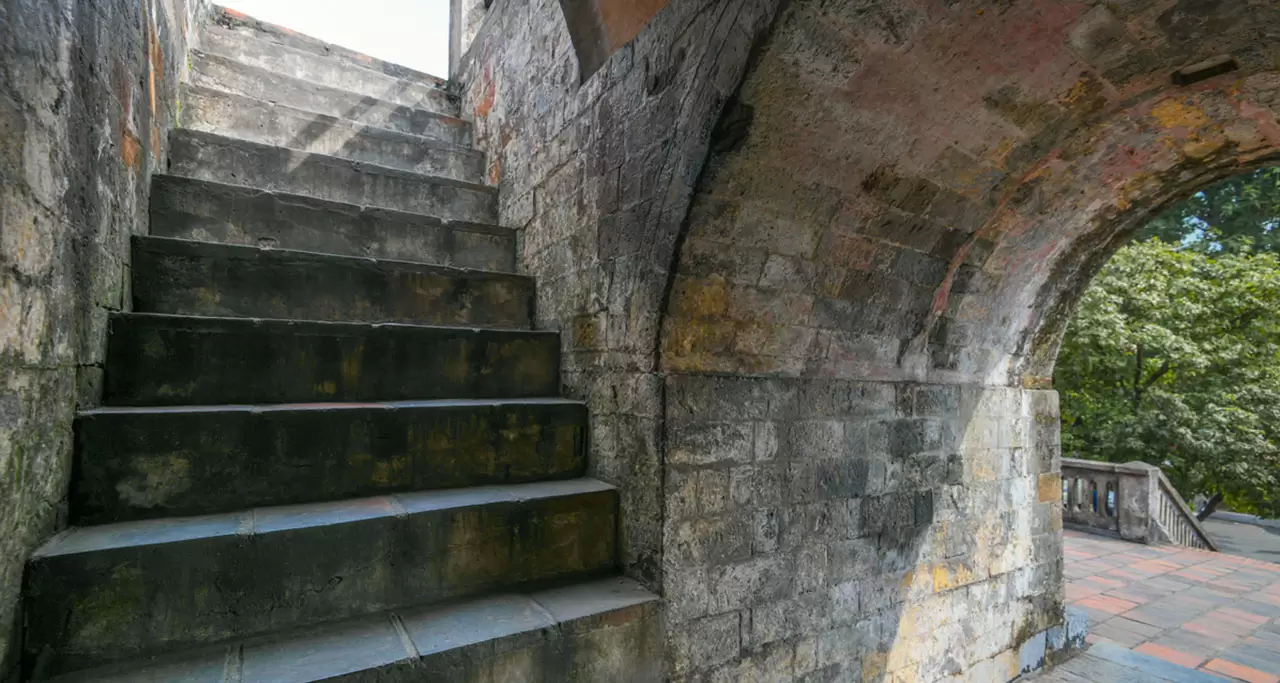
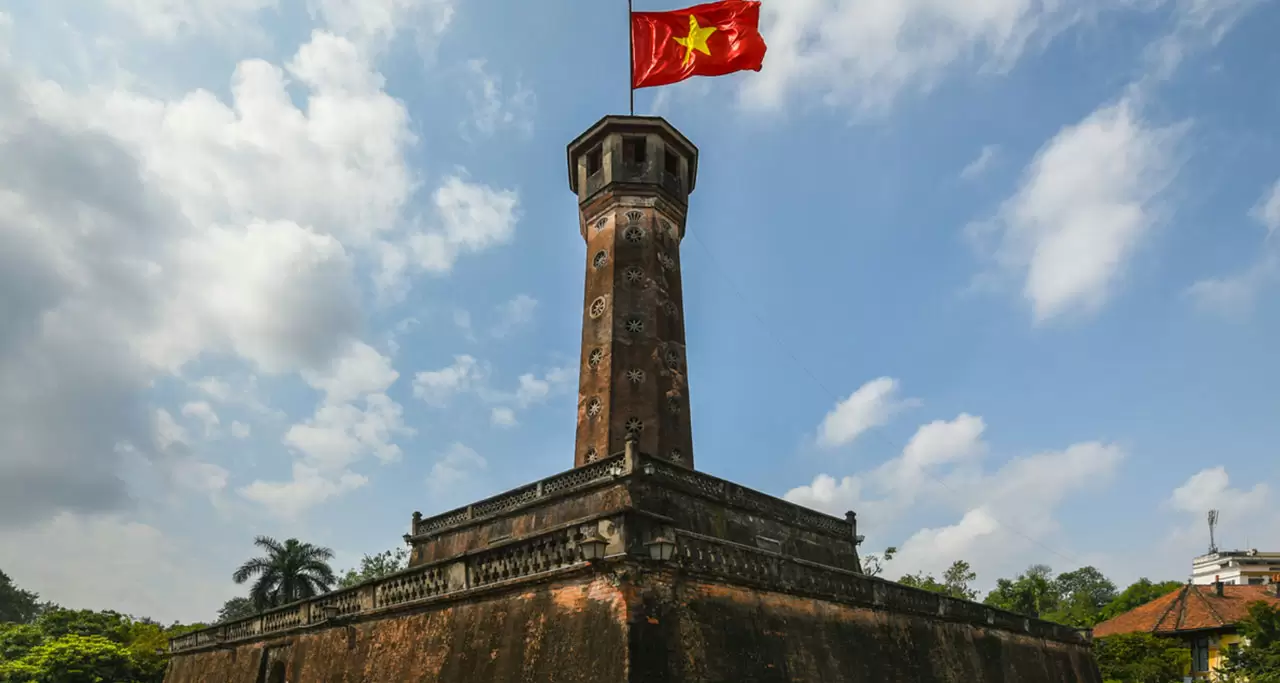











 Italiano
Italiano
 English
English

